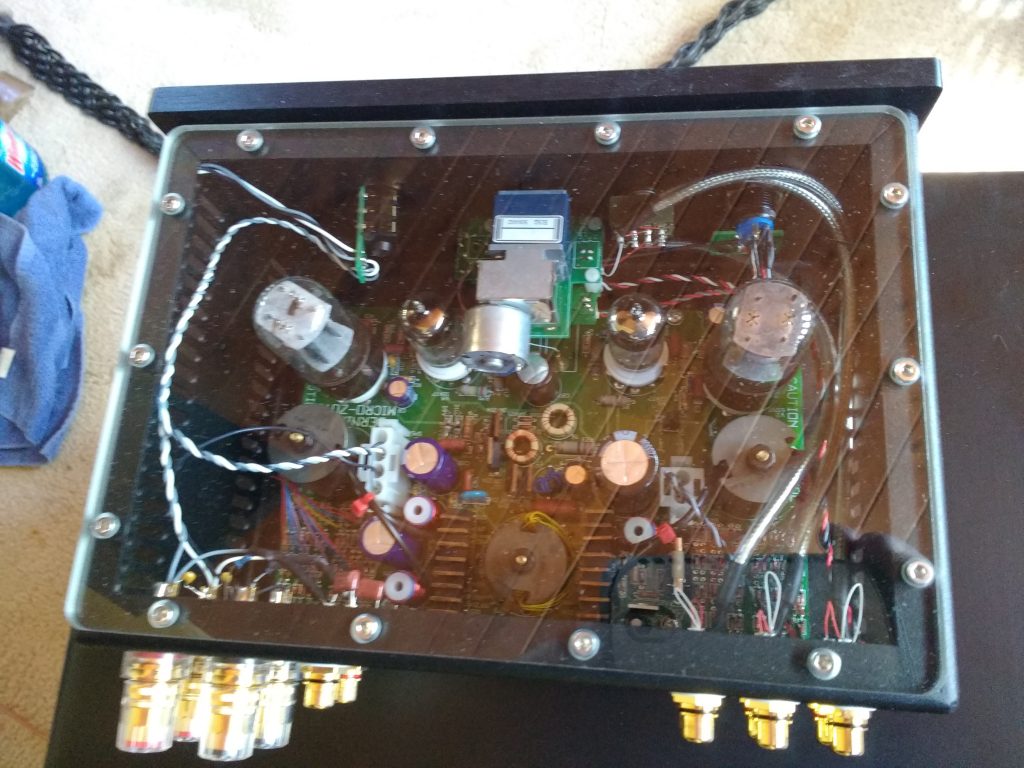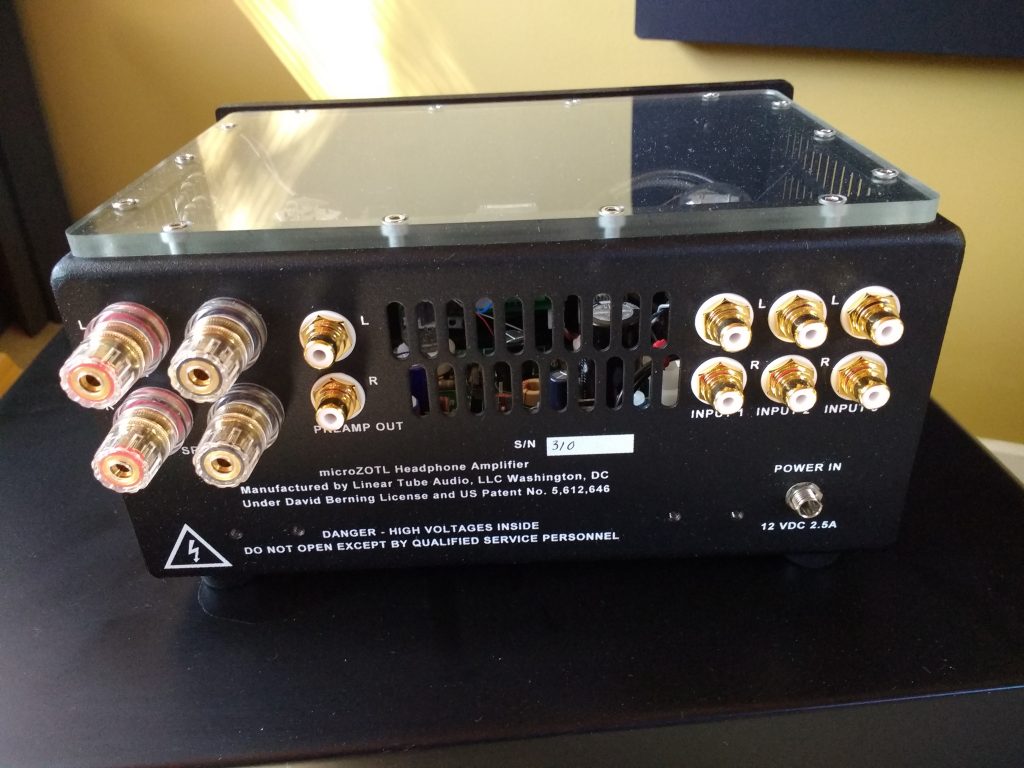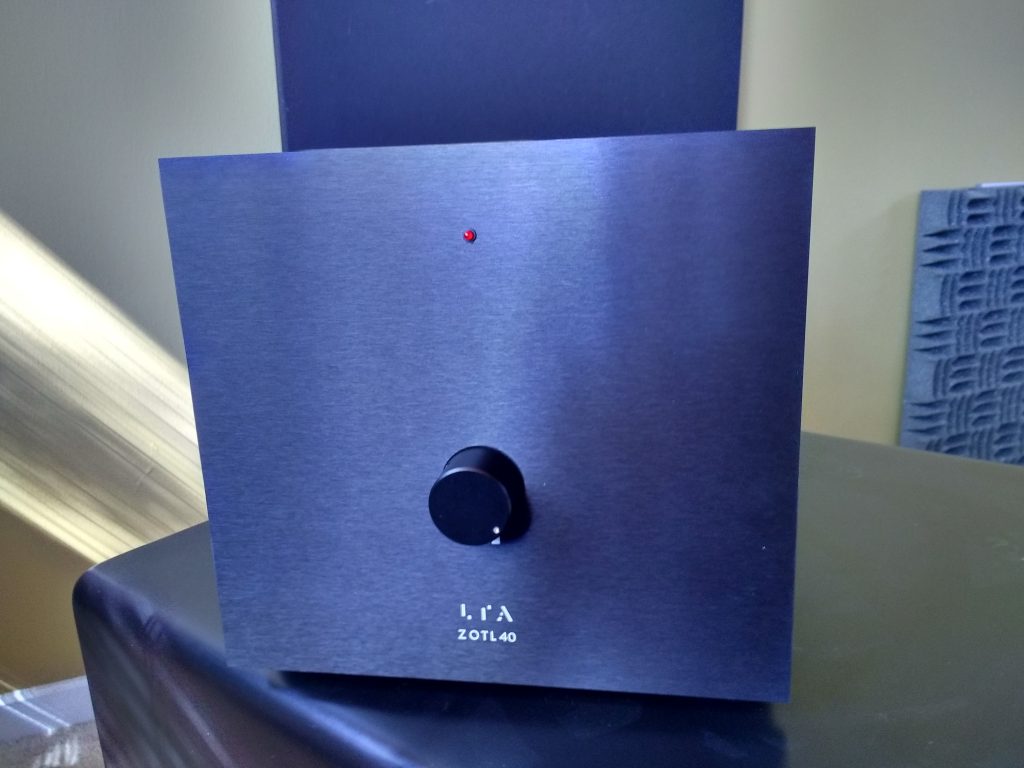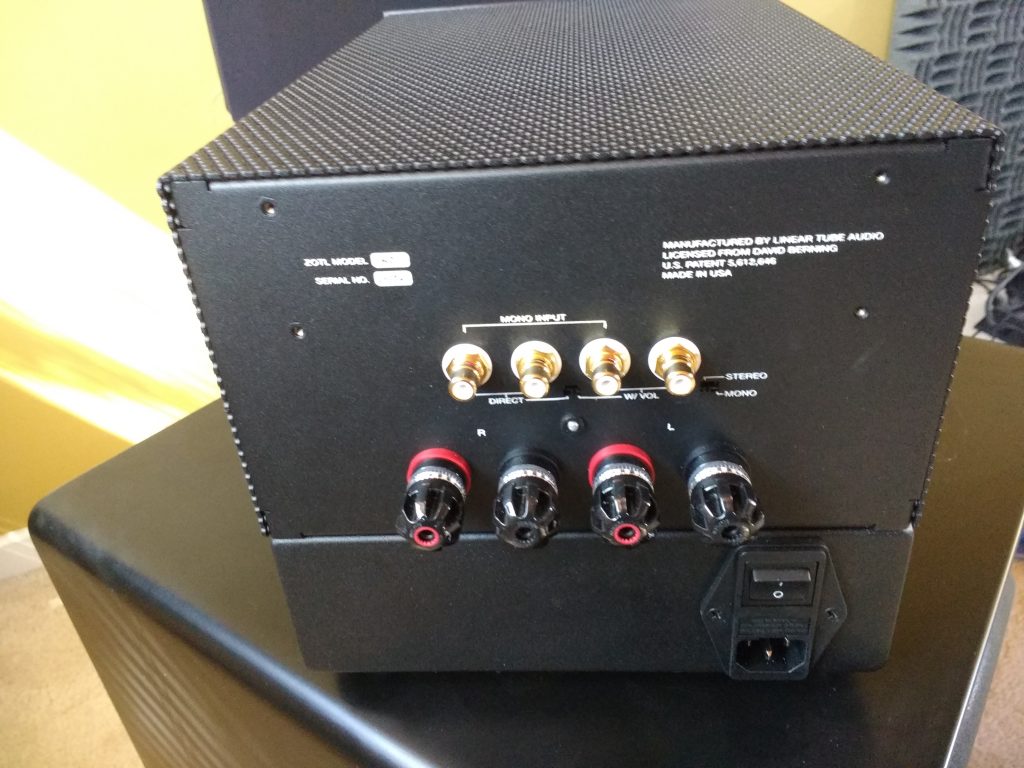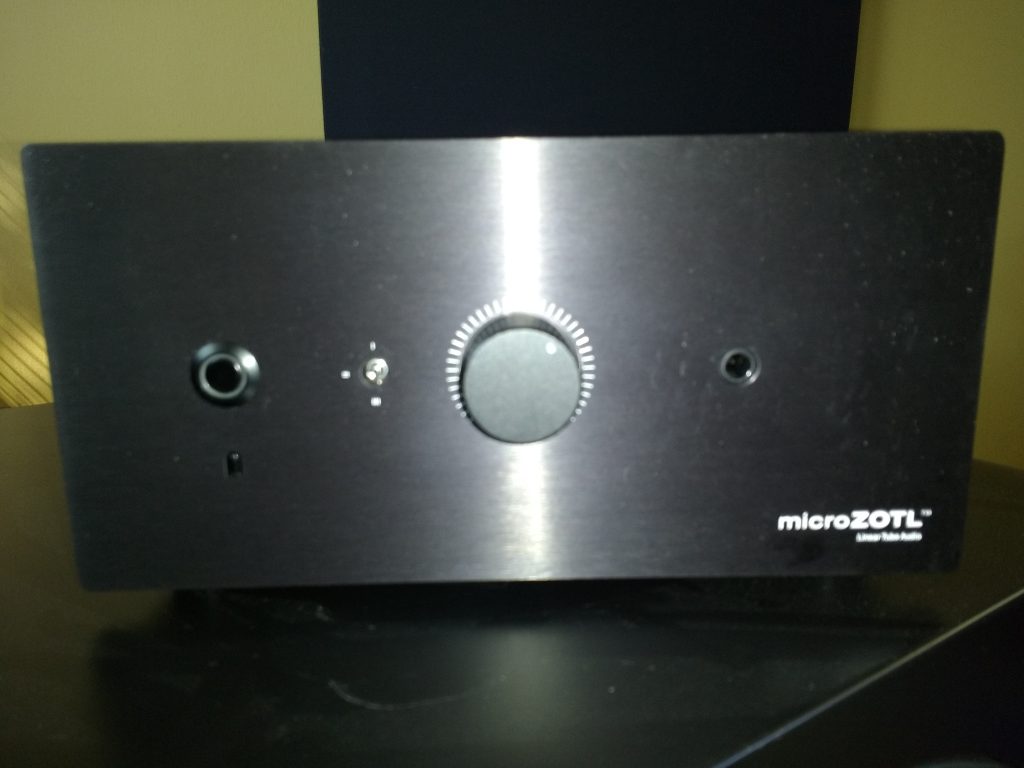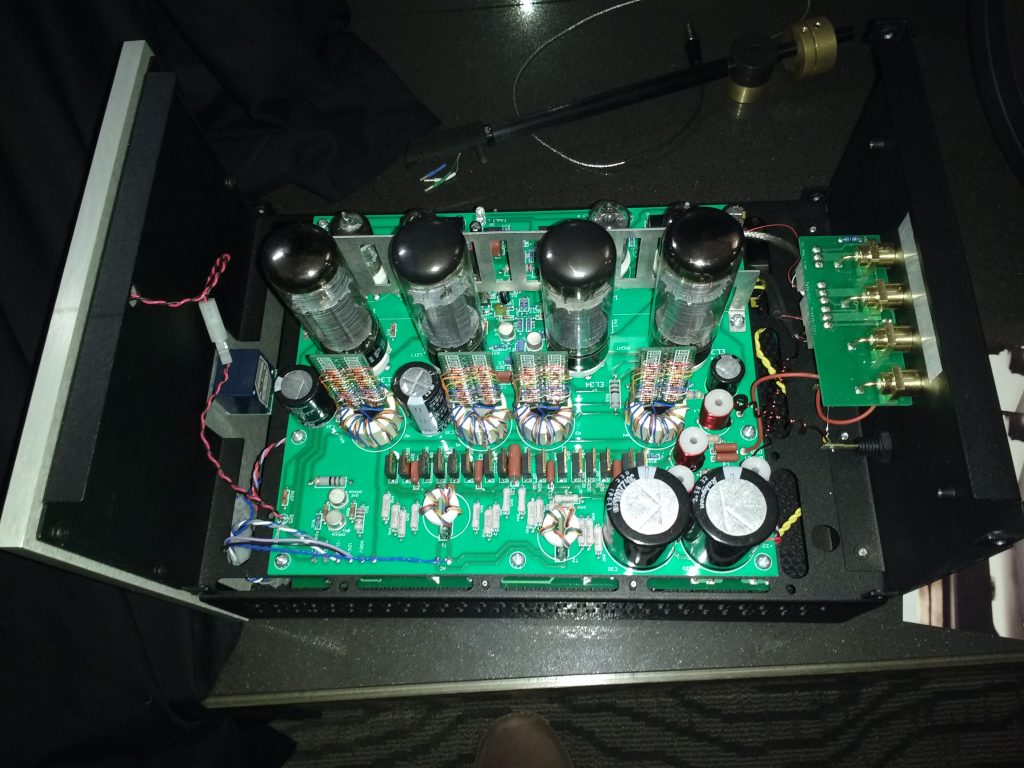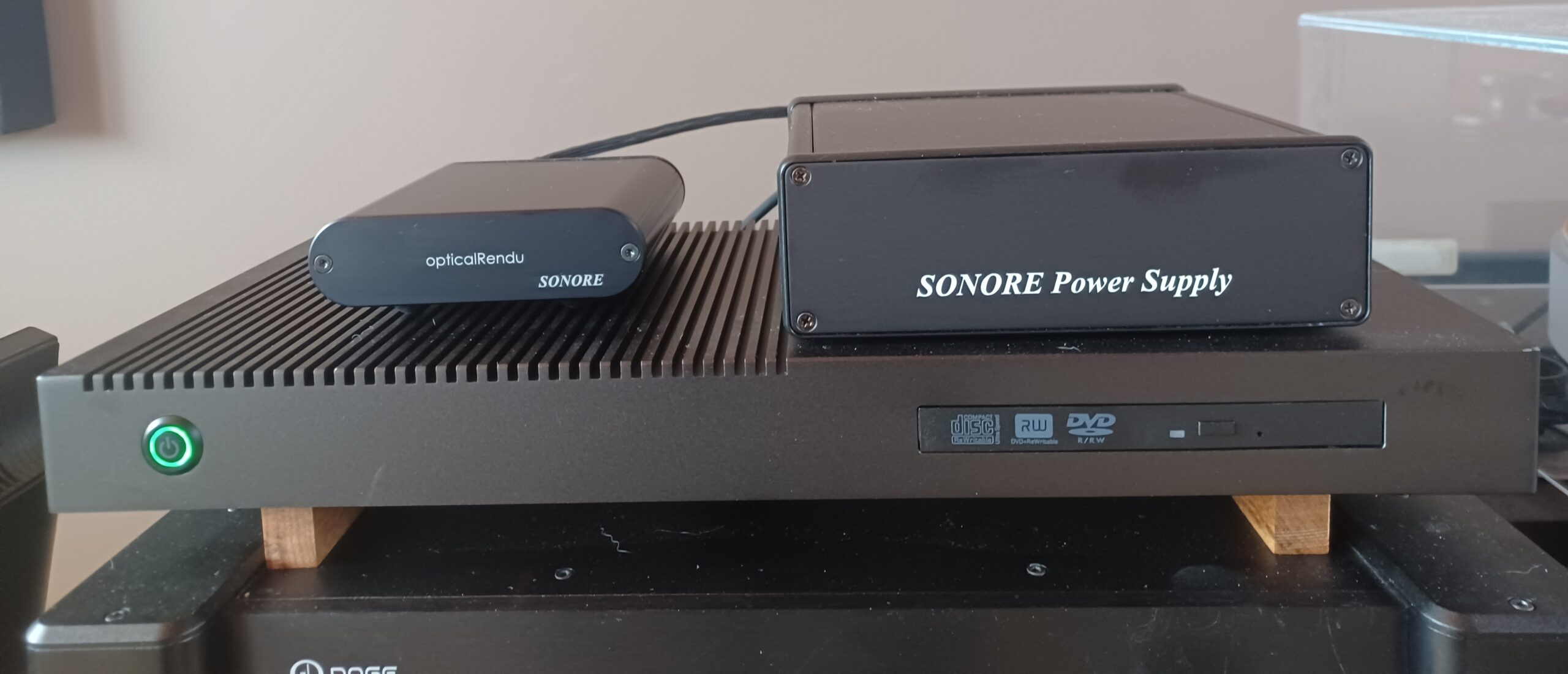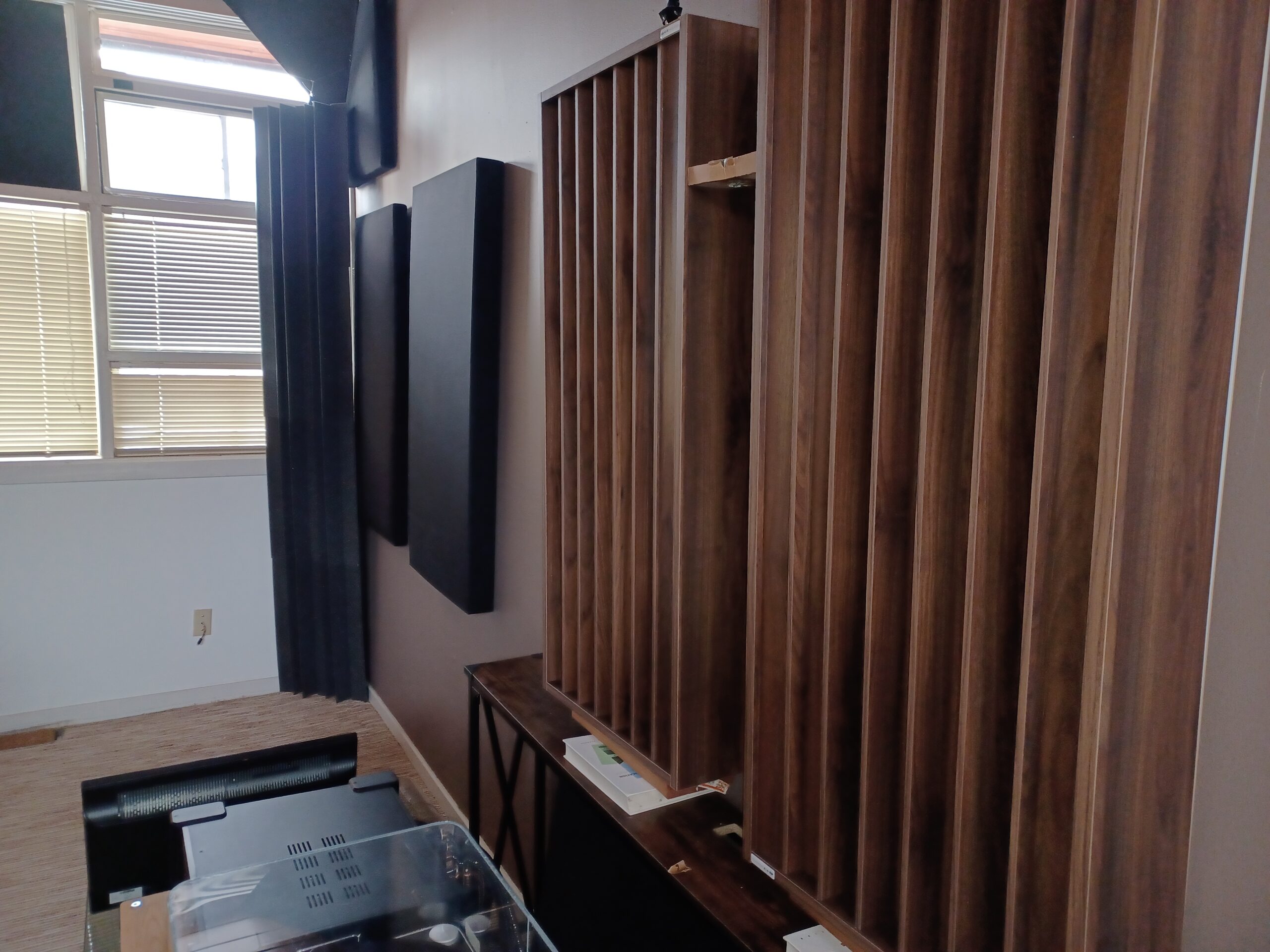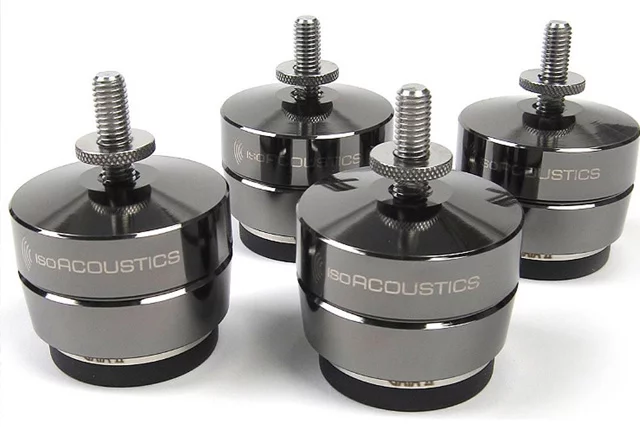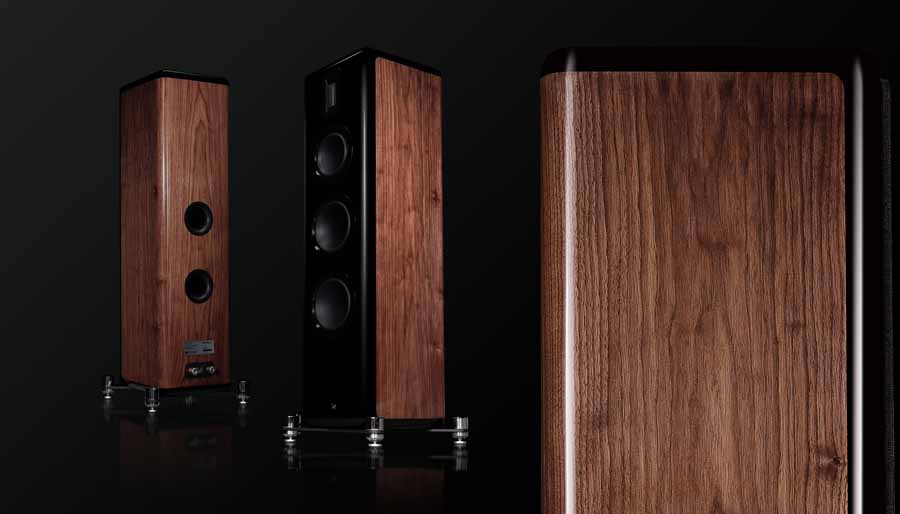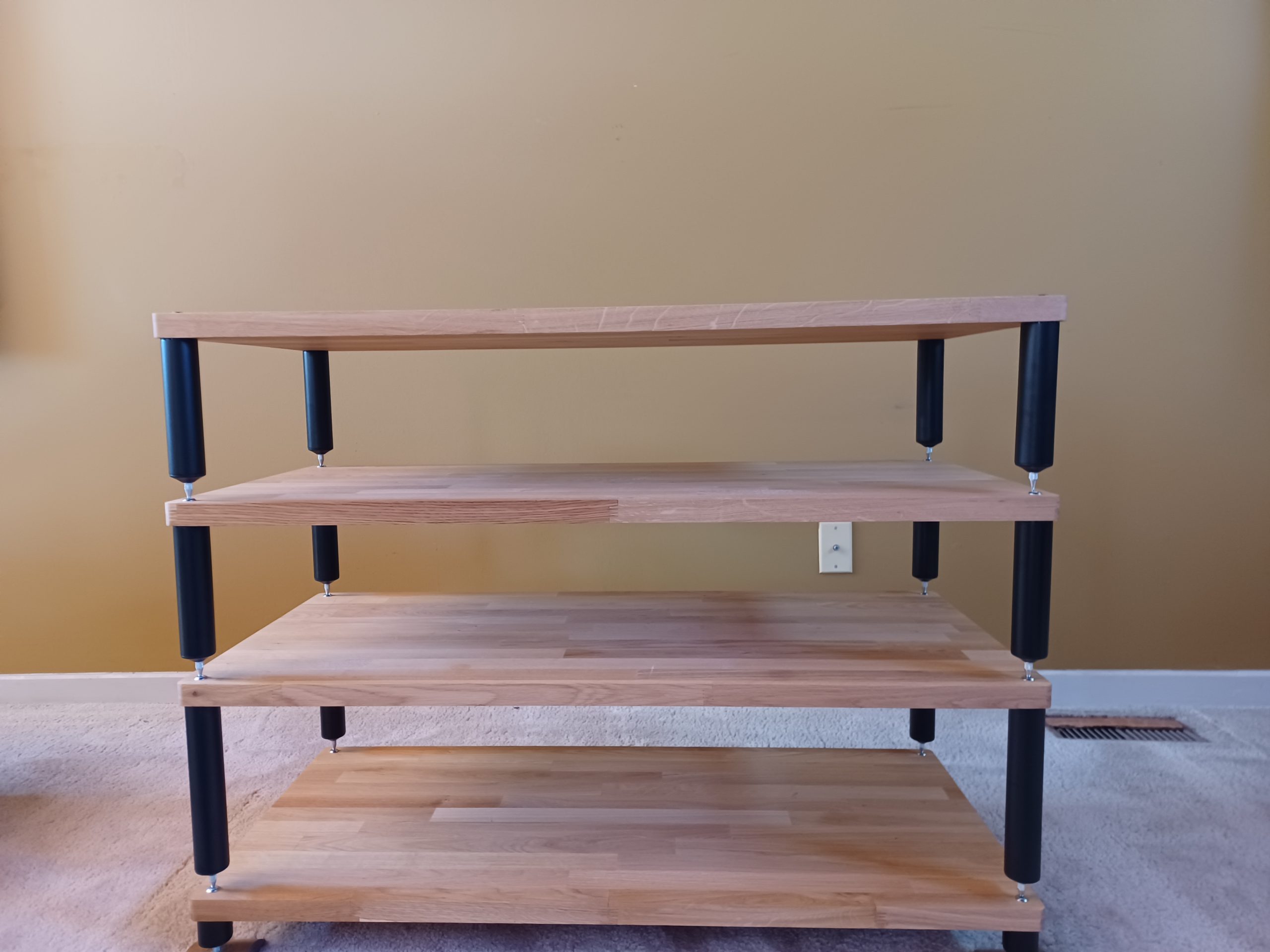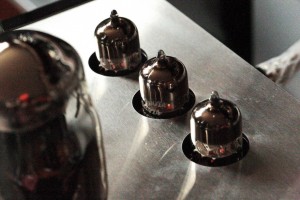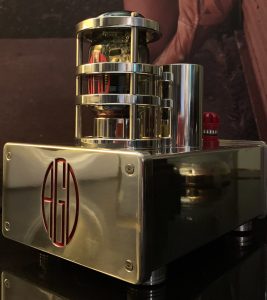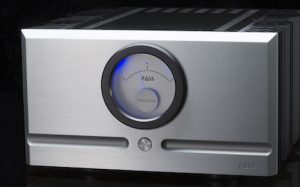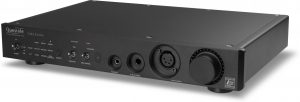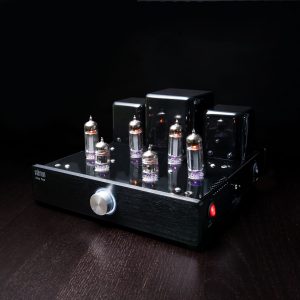When I listened to the Spatial Audio M3 Turbo S (read that review HERE) I was hoping to pair them with the Linear Tube Audio Micro ZOTL MZ2 preamp/heaphone amp and ZOTL 40 power amp. Clayton Shaw of Spatial audio opined that the pairing of the LTA components driving his M3 Turbo S was magical, so I'd hoped to hear that combination. Unfortunately as happens so often with review samples, the timing and logistics didn't work out, but the nice folks from LTA sent me review samples as soon as their latest upgrade was complete.
Founded in 2015 by Mark Schneider, Linear Tube Audio (LTA) is dedicated to manufacturing David Berning OTL designs with David designing the core amplifier circuitry and LTA creating the rest of the unit. Berning OTL designs are quite different from other OTLs. Most others use a lot of tubes to create the current required to drive loudspeakers. ZOTL technology involves a linear amplification process using a carrier frequency as well as no output transformer. The audio signals ride a carrier frequency, which amplifies them, then the carrier is removed and the remaining audio is delivered to the speaker. The way I understand it is the tubes are used for voltage gain, and impedance converters use a chopping signal to take little pieces of the waveform and turn it into high current to drive the speakers.
This review looks at the Micro ZOTL MZ2 preamp/headphone amp/integrated amp (sometimes referred to as a personal amplifier) and the ZOTL 40 power amp, both separately and as a pair.
Hand-built just outside of Washington, DC, the Micro ZOTL MZ2 reminds me of my leatherman tool, which can be all I need for many jobs. From LTA: "The MZ2 is a high quality Class A tube headphone amplifier utilizing ZOTL (Zero-hysteresis Output Transformer-Less) technology. Additional uses of MZ2 include tweeter amplifier, preamplifier, and high-efficiency speaker amplifier recommended for small rooms or desktop setups." The clear lexan top cover dominates the appearance of the Micro ZOTL MZ2. It's a very cool feature that makes me think of the cutaway demo units that you sometimes see at shows. It's an enjoyable visual that lets you peer into the unit to view all the circuitry, and somehow lets me feel a little closer to the music.
The Micro includes two chassis, the main unit, and a separate universal voltage power supply that connects via a dedicated cable. The appearance is functional, but nicely designed, and not out of place among more expensive components. The front panel includes a power switch, a volume control, ¼ inch headphone jack, and a 3-way input selector. The rear panel sports a set of speaker terminals, a pair of RCA preamp outs, three sets of RCA inputs, and the power input connector.
My sample came with an Apple remote for volume. It worked perfectly, and although it is small and light, is milled from one piece of aluminum and feels solid to the touch. The amp section measures 9 1/2"W x 4 3/4"D x 7 7/8"H. The power supply measures 12"D x 3.25"W x 4.25"H. The Tube complement per channel is: 12AT7/6201 input, 6SN7 or 12SN7 output. LTA says that "while technically an OTL amplifier, not having traditional output transformers, the MZ2 is an entirely different kind of circuit that is able to achieve low output impedance and low-current tube operation, which translates to easy matching to almost any headphone or speaker and a very long tube life." All Micro units now have 3 inputs. The DC umbilical cable has been upgraded, and the standard length is 2'. A 4' cable is available for a $20 up-charge. The Micro is also now available with a Silver face-plate. Pricing starts at $1235, and varies depending on Output Tubes, Remote Volume Control, Power Supply, and DC Micro ZOTL MZ2 Cable Length. The Micro ZOTL MZ2 does not have all of the features of a typical preamp: most significantly, it does not have protection for the turn-on/turn-off thumps, which means that a DC-coupled amp could amplify these and damage the speakers. To avoid this, you must turn on the MicroZOTL MZ2 before you turn on your power amp, and turn your power amp off before you turn off the MicroZOTL. It should therefore be the first thing on and the last thing off.
The ZOTL 40 power amp is housed in a simple, tasteful case. My sample was in black, with a nicely finished front plate that features an ALPS volume control should you decide to bypass the preamp. It measures 9"W x 8.5"H x 18"D, and weighs in at 9.7lbs. It is incredibly light for a tube amplifier, the result of no transformers. The tube complement includes two 12AX7s, two 12AU7s, and four KT77s.
The rear panel includes one set of speaker terminals, an on/off rocker switch, and an IEC socket for the power cable. Two sets of RCA inputs let you select between mono and stereo with a small switch between the RCA pairs to select which input to use to ensure complete separation between the direct and volume controlled input. Only one input can be used at a time. If you bridge the outputs the amp can be used as a monoblock. The amplifier is self-biasing and needs no adjustments.
I first listened to the Micro ZOTL MZ2 as a preamp paired with my Quicksilver Mid Mono amps. It instantly revealed a sophisticated, detailed presentation with a silent background. Not overly euphonic, I heard vocals with a touch of midrange magic, and generous air around both vocal and instrumental voices. Its ability to throw a holographic image was undeniable. What struck me was the consistent ability to clearly render instruments and voices that were used in combination to construct textures that were supportive rather than the main theme, be they vocal or instrumental. After listening to just the preamp section I felt the Micro ZOTL MZ2 was easily worth its price for this feature alone.
Next, I decided to borrow some headphones in addition to using some of my own to listen to the MZ2 headphone amp. I also used the headphone amp in my Mytek Stereo 192 DAC which was about the same price as the Micro ZOTL, but a few years older. I felt it was a fair comparison. LTA says the Micro ZOTL 2 "drives all types of dynamic and planar headphones of any impedance". I used the following assortment: Meze 99 Classics (103dB/32 ohm), HiFi Man HE 400i (93dB/35 ohm), HiFi Man HE 560 (90dB/45 ohm) with a DanaCable Lazuli Reference, and the JH Audio Pro 13 (116dB/28 ohm) with a DanaCable Lazuli. After getting the volume on both amps matched, and listening for an hour or so, a trend became apparent. The Meze 99 Classics ($299), a dynamic design that I think is fabulous for the money, always came alive with the solid state Mytek, while both the Hi Fi man models liked the Micro ZOTL. Solid-state and dynamic drivers, tubes and panels. It could be just my tastes, but the sound of the planar cans and the tubes of the Micro ZOTL just lit me up.
With my JH Audio Pro 13s, the Mytek scored with punchy dynamics and timing, but the easy winner was the Micro ZOTL. These IEMs are my travelling companions, and I've never really heard them with a non-portable source/amp. Their sound leans towards accurate, not full textured or rich. I was surprised at how much they filled out, and with the Micro ZOTL gave me the best performance I'd ever heard from the PRO 13. Too bad I can't take the LTA amp on flights.
The overall winning combination of this little shootout was the Micro ZOTL with the HiFi Man HE 560 ($899) / DanaCable Lazuli Reference ($1199). The way the Micro ZOTL drove the most expensive cans, upgraded with an award-winning cable was what I preferred, no surprise. Depending on your budget, this combination could stand all on its own to take you to headphone heaven. Because I'm not an ardent headphone enthusiast—don't get me wrong, I love headphones, but given the choice I usually listen to my big rig—I originally thought the Micro ZOTL's preamp function was its main feature, and headphone amp was icing on the cake. But, depending on your priorities it could certainly be the other way around.
Switching focus to the ZOTL 40 power amp which features a push-pull, Class AB output stage, I decided to use a pair of Emerald Physics EPX speakers, which spec'd out at 93dB efficiency and an 8 ohm nominal / 6 ohm minimum impedance. The EPX turned out to be a really excellent match. Although LTA says the ZOTL 40's low impedance output easily matches a wide range of speakers I didn't feel my mini monitors at 87dB were quite the right match. At first I drove the ZOTL 40 with my heavily modded and tube rolled Dared MC-7p preamp, playing digital tracks using Amarra for Redbook and Audirvana for high-res on my modded Mac mini with the Mytek DAC. Upon first impression I thought the ZOTL 40 was a bit polite, but eventually I noticed the amp had a longer warm up period than what I'm used to. Once it really warmed up, it was a totally different experience. All of a sudden it shed the polite skin to reveal a forceful, punchy core. Macy Gray's "Redemption Song" from Stripped had an ethereal quality, her channeling of Bob Marley was out-and-out spooky. Displayed in 3D between the speakers, the passion in this music was totally a gripping emotion of human sorrow expressed through song. When I punched the Eurythmics old ('83) hit "Sweet Dreams" from the album of the same name, any concerns that the ZOTL 40 might be light on bass were allayed. With its in-your-chest bass synth lines prominent, the low end really shone. Tight, taught, and alive. The ZOTL 40's character was emerging. Not a warm, tubey sounding tube amplifier, not an accurate, leaner sounding amplifier, but somewhere in-between, with some of the cleanest, most liquid sounds I've heard.
When I paired the Micro ZOTL and the ZOTL 40 the first thing I noticed was the combination was easily the least noisy tube preamp/amp I've ever had in my room, which facilitated the music emerging from a blacker background. Balance was flowing with midrange goodness, proper definition in the low frequencies, and crystal clear, clean highs. Previously buried lines and accents and textures now became part of the mix, and many times changed my perspective on the music. This is a very capable microdynamic pair that paints low level dynamic attack in a lifelike way. Delicate shadings are easily discernable, yet forceful dynamics abound when called for.
I'm usually not big on the usual audiophile standards you hear constantly at shows, but I decided to put my toe in the water. Listening to Patricia Barber's "The Beat Goes On" from Companion, the forceful impact of bass and drums were a striking contrast to the laid back vocal, authority vs. fragility. An excellent recording, and a version that for me improves on the original, it got me to sit up and take notice of this Sonny Bono composition. Another audiophile classic, Jennifer Warnes' "Bird on a Wire" from Famous Blue Raincoat was nicely done. I heard liquid, uncolored vocals, and both the subtlety and bombast of the great Vinnie Colaiuta's drumming. A vivid recording, the accents jumped from the speakers while the voice remained nicely airy.
What LTA has produced is a very interesting combination that goes beyond the standard preamp/amp pair. Not only are they respected Berning designs that have been even further optimized, there is more. The Micro is, in my opinion, is worth the full price of admission for either the headphone amp or the preamp section. The fact that you get both plus an integrated amp that works with very efficient speakers makes this piece a great value. I enjoyed it as a preamp that would feel at home in most systems, plus its headphone amp is excellent. I didn't get a chance to try it as an integrated, but I'd be willing to bet that with some really efficient speakers, you'd have a contender. The Micro is clearly a winner, and a true bargain.
The ZOTL40 Mk. II, while priced higher than the Micro, is still in the affordable range for most audiophiles. It is liquid and detailed, but able to punch hard when called for. Superior dynamics both micro and macro. It had some of the lush harmonics tubes are known for, but combined with its crystal clear voice gives us with a tube amplifier experience that is slightly different than most designs. The key to happiness with the LTA combo is matching with some efficient speakers. LTA's site includes a list of speakers that they recommend and they also provide a 15-day trial period for evaluation, which should be all you need to ensure you have a solid match. Together, the combination from LTA can provide a long lasting, affordable reference to build your system around. The Micro ZOTL and the ZOTL 40 are easy to recommend, and could very well be all you'll ever need to keep your music close to you for a long time.
ZOTL 40 Mk. II Amplifier
Retail: $5800
Micro ZOTL MZ2 Headphone Amplifier
Retail: from $1235
Linear Tube Audio
https://www.lineartubeaudio.com




